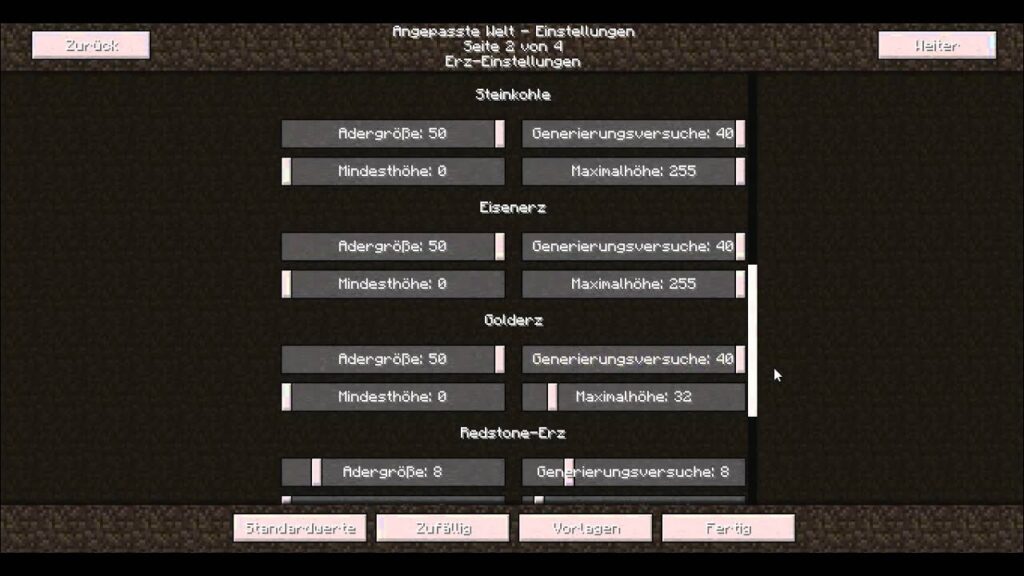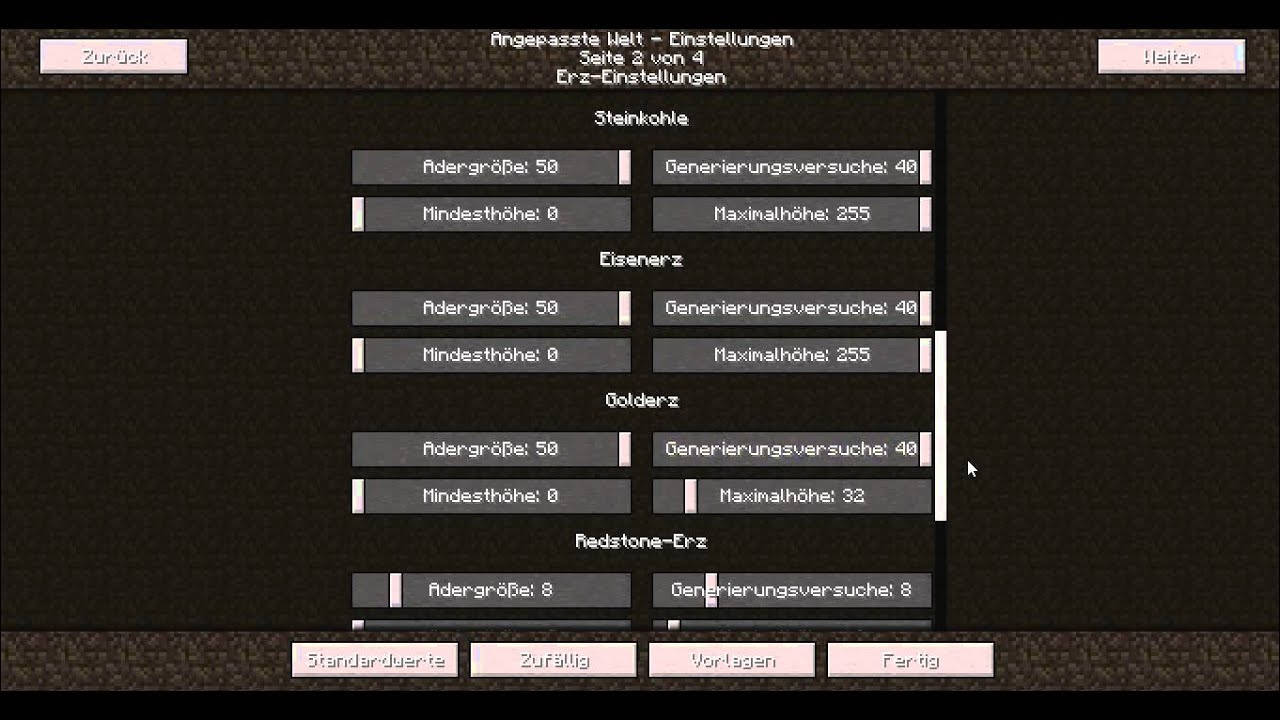
Understanding Minecraft Spawn Rates: A Comprehensive Guide
Minecraft, the sandbox game that has captivated millions, thrives on its dynamic world filled with creatures, resources, and endless possibilities. A crucial element that governs this dynamic world is the Minecraft spawn rate. Understanding how these rates work can significantly enhance your gameplay experience, whether you’re building a bustling village, defending against hordes of zombies, or optimizing a mob farm. This comprehensive guide delves into the intricacies of Minecraft spawn rates, exploring the factors that influence them, how to manipulate them, and why they matter.
What are Minecraft Spawn Rates?
In simple terms, Minecraft spawn rates determine how frequently different entities appear in the game world. These entities include passive mobs like cows and sheep, hostile mobs like zombies and skeletons, and even specific items or structures. The spawn rate is not uniform across the entire game; it varies depending on factors such as biome, light level, game difficulty, and the presence of specific blocks.
The game engine constantly attempts to spawn new entities within a certain range around the player. However, there are limitations to prevent the game from becoming overwhelmed. These limitations include a mob cap, which is the maximum number of mobs that can exist within a loaded area, and specific conditions that must be met for each type of entity to spawn.
Factors Influencing Spawn Rates
Several factors influence the Minecraft spawn rate. Understanding these factors is key to controlling and manipulating the game’s environment to your advantage.
Light Level
Light level is a critical factor, especially for hostile mobs. Many hostile mobs, such as zombies, skeletons, and creepers, require a light level of 0 to spawn. This is why they typically appear in caves, at night, or in dark areas. Conversely, passive mobs generally require higher light levels to spawn.
Biome
Different biomes have different mob distributions. For example, you’re more likely to find polar bears in snowy biomes and horses in plains biomes. The biome also influences the types of hostile mobs that spawn. Some hostile mobs, like husks, are specific to desert biomes.
Game Difficulty
The game difficulty setting (Peaceful, Easy, Normal, Hard) directly impacts the Minecraft spawn rate of hostile mobs. On Peaceful, no hostile mobs spawn naturally. On higher difficulties, the spawn rate increases, and mobs can also have increased health and damage.
Mob Caps
The mob cap is the maximum number of mobs that can exist within a loaded area. This cap is divided into categories: hostile, passive, ambient, water, and axolotls. Once a category reaches its cap, no new mobs of that type will spawn until existing ones despawn or are killed. Understanding mob caps is crucial for optimizing mob farms.
Blocks and Structures
The presence of specific blocks or structures can influence spawn rates. For example, villages have a higher spawn rate for villagers. Similarly, certain blocks, like moss carpets, can influence the spawning of specific mobs like frogs.
Manipulating Spawn Rates for Fun and Profit
Now that we’ve covered the factors influencing Minecraft spawn rates, let’s explore how you can manipulate them for various purposes.
Creating Mob Farms
Mob farms are structures designed to efficiently collect resources from mobs. By manipulating light levels and creating enclosed spaces, you can encourage mobs to spawn in specific areas, where they can then be automatically killed and their drops collected. Optimizing Minecraft spawn rates is essential for creating efficient mob farms.
To build an effective mob farm, you need to consider the following:
- Darkness: Ensure the spawning area is completely dark to maximize the spawn rate of hostile mobs.
- Space: Provide ample space for mobs to spawn. A typical spawning platform is at least 2x2x3 blocks in size.
- Mob cap: Design your farm to efficiently kill mobs to prevent the mob cap from being reached, allowing new mobs to spawn continuously.
- Location: Build your farm in an area with few other spawning locations to maximize the spawn rate within your farm.
Controlling Passive Mob Populations
You can also manipulate spawn rates to control passive mob populations. This is useful for creating farms for food, wool, or other resources. To encourage passive mobs to spawn, ensure there is sufficient light and suitable terrain in a confined area. [See also: Minecraft Animal Breeding Guide] Fences and other barriers can prevent mobs from wandering away.
Reducing Hostile Mob Encounters
If you prefer a less challenging experience, you can reduce hostile mob encounters by increasing the light level in your base and surrounding areas. Torches, lanterns, and other light sources can prevent hostile mobs from spawning, creating a safer environment.
Advanced Techniques for Spawn Rate Manipulation
For more advanced players, there are several techniques to fine-tune Minecraft spawn rates.
Using Spawn Chunks
Spawn chunks are a set of 16×16 block areas that are always loaded, regardless of the player’s location. Mobs can spawn in these chunks even when the player is far away. Building mob farms in spawn chunks can result in significantly higher spawn rates.
Entity Cramming
Entity cramming is a game mechanic that causes entities to take damage when too many entities are in the same block. This can be used to automatically kill mobs in a mob farm, but it can also be problematic if too many entities accumulate in one area. Understanding entity cramming is important for optimizing mob farms and preventing lag.
The /gamerule Command
The `/gamerule` command allows you to modify various game settings, including the spawn rate. For example, you can use the `doMobSpawning` gamerule to disable or enable mob spawning entirely. This can be useful for creating custom game modes or troubleshooting issues with mob spawning.
Common Misconceptions About Minecraft Spawn Rates
There are several common misconceptions about Minecraft spawn rates that can lead to confusion and frustration. Let’s debunk some of these myths.
- Myth: Increasing the number of players increases the spawn rate.
Reality: While the number of loaded chunks increases with more players, the spawn rate per chunk remains the same. However, more players can lead to more overall mob spawns due to the increased number of loaded areas.
- Myth: Building a mob farm in the Nether increases the spawn rate significantly.
Reality: The Nether does have a higher density of hostile mobs, but the fundamental spawn rate mechanics are the same. The advantage of the Nether is that it’s easier to create large, enclosed spaces for mob farms.
- Myth: Changing the time of day affects the overall spawn rate.
Reality: The time of day primarily affects the types of mobs that spawn. For example, more hostile mobs spawn at night, while more passive mobs spawn during the day. The overall spawn rate remains relatively constant.
Troubleshooting Spawn Rate Issues
Sometimes, you may encounter issues with Minecraft spawn rates, such as mobs not spawning as expected. Here are some troubleshooting tips:
- Check the light level: Ensure that the area where you want mobs to spawn has the appropriate light level. Hostile mobs require a light level of 0, while passive mobs require higher light levels.
- Verify the biome: Make sure you are in a biome where the desired mobs can spawn. Some mobs are biome-specific.
- Clear the area: Remove any obstructions or unnecessary blocks that might be preventing mobs from spawning.
- Check the mob cap: If the mob cap has been reached, no new mobs will spawn until existing ones despawn or are killed.
- Restart the game: Sometimes, simply restarting the game can resolve issues with mob spawning.
The Future of Minecraft Spawn Rates
As Minecraft continues to evolve with new updates, the mechanics of spawn rates may also change. Mojang often tweaks mob spawning behavior to improve gameplay and balance the game. Staying informed about these changes is essential for optimizing your Minecraft experience. [See also: Latest Minecraft Update News]
Conclusion
Understanding Minecraft spawn rates is crucial for both casual and hardcore players. By mastering the factors that influence spawning and learning how to manipulate them, you can create efficient mob farms, control passive mob populations, and customize your gameplay experience to your liking. Whether you’re building a sprawling city or surviving in the wilderness, a solid grasp of spawn rates will undoubtedly enhance your adventures in the world of Minecraft. So, dive in, experiment, and unlock the full potential of this dynamic and ever-evolving game!

